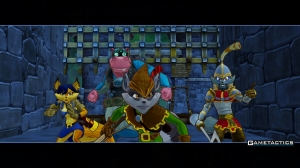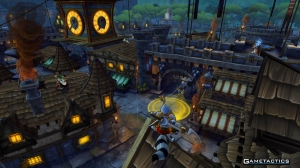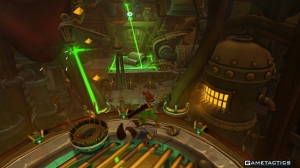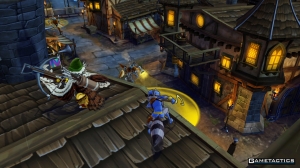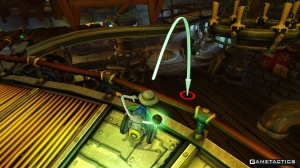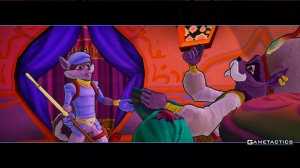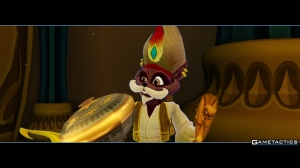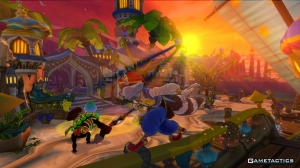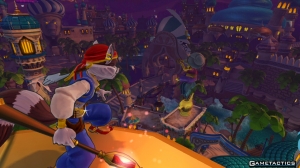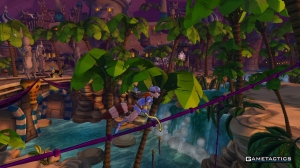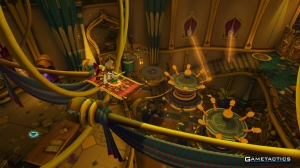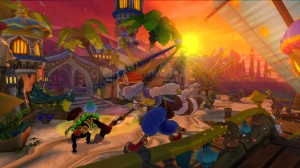 Historically, storytelling in video games has always been something of a low priority. Graphics and gameplay have always been treated as paramount to a game’s success, with character development and plot seen as useful but not vital. Assumedly the reason for this is that people ostensibly play games to be a bad dude or a hero of time, and if they wanted a deep plot and well-rounded characters, they’d be watching a movie or reading a book instead. To drive the point home even further, TVTropes, a website that seeks to catalog the conventions for writing fiction, has an entire section devoted to “excuse plots:” plots that only exist to justify the events that occur and nothing more. It contains 28 pages of content. Almost a full 25 are for video games alone.
Historically, storytelling in video games has always been something of a low priority. Graphics and gameplay have always been treated as paramount to a game’s success, with character development and plot seen as useful but not vital. Assumedly the reason for this is that people ostensibly play games to be a bad dude or a hero of time, and if they wanted a deep plot and well-rounded characters, they’d be watching a movie or reading a book instead. To drive the point home even further, TVTropes, a website that seeks to catalog the conventions for writing fiction, has an entire section devoted to “excuse plots:” plots that only exist to justify the events that occur and nothing more. It contains 28 pages of content. Almost a full 25 are for video games alone.
This makes Sanzaru Games’ Sly Cooper: Thieves in Time quite a different animal (pardon the pun). Though the game’s plot seems shallow on the surface – Someone is erasing Sly’s ancestors from history, and it’s up to the Cooper gang to travel through time to stop him – it’s actually very nuanced, and every character, even the villains, has his or her own unique, colorful backstory. The anthropomorphic heroes and their plight would be right at home in a set of children’s books or in a Saturday morning cartoon, and they would make for an excellent one at that. The witty writing is top-notch. More than a few exchanges between the oft-wisecracking Coopers and the never-amused Bentley had me chuckling to myself as I played.
Speaking of colorful aspects of Thieves in Time, each time period has its own distinct look and feel. For example, the Old West of Tennessee Kid Cooper takes place in a desert town with an evocative soundtrack inspired by Western movies. Sir Galleth Cooper’s medieval circus level has a bouncier tune to reflect the mayhem taking place among the rings of fire, swinging trapezes, and other trappings of the circus. Through it all, veteran OST composer Peter McConnell definitely showed why he’s been doing this for over 20 years now and is still at the peak of his powers. The effort displayed in setting up the world of the Cooper Gang, their antagonists, and Sly’s antagonists is palpable and almost worth the playthrough by itself.
It’s a shame that the gameplay, as varied as it is, seems to have received the short end of the stick. Though there are many characters to play as, all of whom with at least one unique ability, they’re not used to much effect. Most of the time, the developers rely on these unique abilities so much that it seems as though they had no other ideas for the levels. Salim Al-Kupar complains frequently about how much he has to climb because he’s good at it, and I can’t blame him one bit by the end of his levels. The new element to the series, Sly’s time-period specific, ability-endowing costumes, are treated much the same way. Once you receive a costume, you can bet you’ll be using its ability nearly exclusively for the rest of the level. As the saying goes, when all you have is a hammer, everything looks like a nail.
The combat is equally as dull and lifeless. Enemies are either meant to be taken head-on and dispatched easily with a couple hits or they’re meant to be too strong to fight, forcing the player to use stealth to avoid or assassinate the enemy. There’s no in-between, and no standard enemy has any ability that makes combat interesting. Perhaps the ease of this game and repetitive gameplay is due to the young audience this game is aimed at. It’s not a particularly good excuse, but it’s the only rationale for the absence of creativity in the levels and the amount of padding that takes place. There’s literally a level where two characters enter an area, one character places devices around the level, and the other character then has to revisit those places and activate them.
Thieves in Time does break from the formula on occasion. There are many minigames spread throughout, but with a few exceptions, these become overused as well. Need to do anything with a computer? Get ready to play one of Bentley’s hacking minigames. This situation comes up a lot. Even a mission with five separate minigames manages to pad its content. At first, the player must play them all separately in any order. After the player completes all the minigames, they have to play them all multiple times in whatever order the game chooses. Design choices like these cause nearly every element of Thieves in Time to overstay its welcome.
Boss battles are mostly a respite from this trend. Each boss does have patterns that repeat themselves. However, each battle provides a unique set of challenges that becomes increasingly more difficult as the boss loses health. It’s a somewhat formulaic and clichéd approach to boss fighting, and it’s easy to argue that the continue checkpoint every time the boss loses health makes every boss fight somewhat of a joke. But it’s the one part of the actual game that never feels like a chore. It’s an unfortunate testament to the state of gameplay in Thieves in Time.
For the obsessive, Thieves in Time contains the usual amount of Sly collectibles. Players can roam the overworld of each time period to find bottles, masks, or treasure, all of which unlock games, outfits, or extra abilities for each character. Sony and Sanzaru Games were mostly friendly to consumers in Thieves in Time. There were some preorder bonuses, but there’s no pesky DLC to be found.
Those on the fence for a Vita purchase should know that each copy of Thieves in Time on the PS3 does come with a Vita copy as per Sony’s CrossPlay initiative and also features cross-platform saving. The Vita copy is identical to the PS3 copy except for the lack of cel-shading on the Vita. Otherwise, it keeps up graphically with the PS3 version, chugging only in a few busy areas. This says a little about how the graphics of Thieves are merely adequate and how the overworld is mostly homogeneous, but for the most part, they get the job done.
Loading times on the Vita are miserable. It’s not uncommon for load times to be anywhere from 30 seconds to a minute long, and there are at least a couple occasions where the period between two loads was less than the loads themselves. Subtitles are completely missing during pre-rendered cutscenes even when turned on in the menu. As these represent a substantial amount of the story, this is a major oversight in any game, much less a portable one where it may not always be possible to have the sound up. It lowers accessibility for handicapped players, too.
Despite all this, Thieves in Time is entertaining. The banter between characters and the delightful story kept me enjoying myself as I played. This game has all the pieces of a great game there, but it just finds itself a little short of putting it all together. A bit more thought in the level and enemy design would have made this title a classic. As it is, it serves as a reminder of the difficulty of hitting a home run in every aspect of a game.
Gameplay
Graphics
Sound
Overall

